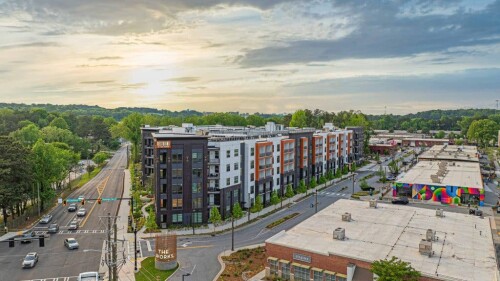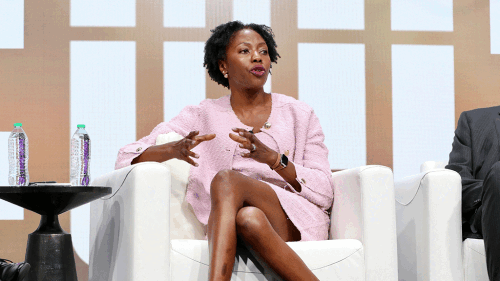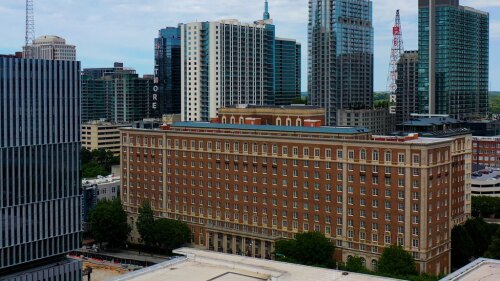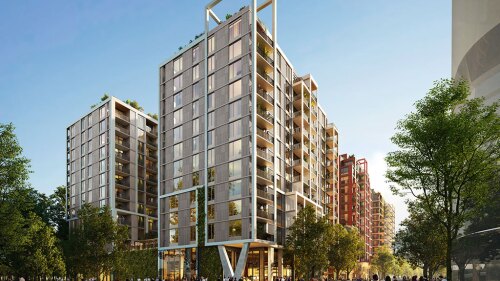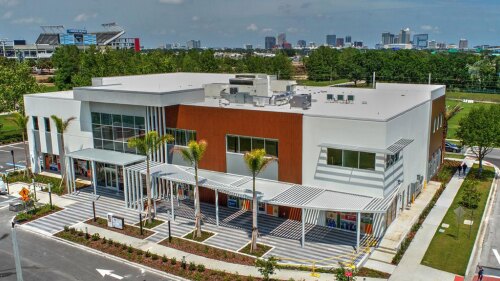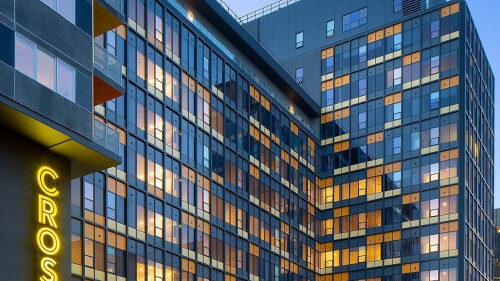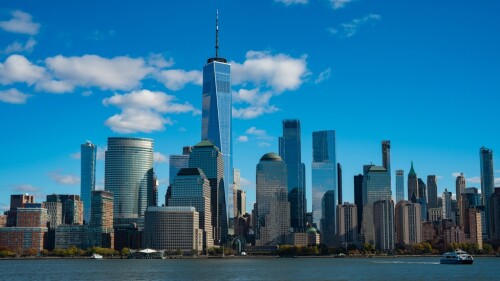Property Types
Hotels and Resorts
Two years after the start of the global pandemic, the outlook for the U.S. hotel industry is decidedly positive. STR, a CoStar Group company and a global leader in hospitality analytics, continues to report ever-improving metrics in the United States. The prospects for the sector are embodied in six themes.
Eight new hotels are now under construction in Chicago’s central business district, totaling about 1,500 new rooms, according to the latest list from STR Group. Developers are also planning to start construction on more than a dozen other new hotel projects, totaling an additional 3,700 new rooms.
Though investor interest in the hospital sector was muted for most of 2020 in response to the uncertainty of the COVID-19 pandemic and global travel, the lodging industry is poised to rebound in 2021, according to JLL Hotels & Hospitality’s annual Hotel Investment Outlook.
Industrial
Spanning 80 acres (32.4 ha) and 1 million square feet (93,000 sq m) of industrial space, The Works is located off Chattahoochee Avenue, a once-quiet industrial corridor on the west side of Atlanta. This pocket of the city—now known as the Upper Westside with a new CID to prove it—has seen explosive growth since plans for The Works were announced in 2017.
It’s tough to view a strong economy as bad news. Yet a firmly positive economic projection in ULI’s Real Estate Economic Forecast does not bode well for commercial real estate participants who are hoping for relief in rate cuts from the U.S. Federal Reserve.
Once overlooked as little more than open-air spaces for trailer parking, industrial outdoor storage (IOS) sites are emerging as a promising niche for their increasingly significant role in the e-commerce and logistics sectors and their potential to earn strong returns for investors.
Mixed-Use
In Midtown Atlanta, the Georgia Institute of Technology Foundation is turning the 100-year-old former Biltmore hotel into a mecca for incubating technology startup ventures.
When Ballantyne first emerged out of North Carolina farmland, more than 30 years ago, the original developers of this master-planned project already had a concrete vision in mind for its future: evolution. The development team intrinsically understood that, as Ballantyne—an affluent community nestled in south Charlotte—would expand beyond its farmland roots, the project would need to adapt to meet the needs of a more diverse and changing demographic.
Nestled in the shadow of SSM Health’s new $550 million hospital and Saint Louis University’s medical and undergraduate campuses, the former Steelcote Manufacturing Company Paint Factory and its neighboring parcels constituted a forgotten remnant of St. Louis’ proud industrial past. Few observers, if any, envisioned the area’s potential for housing not only students and hospital employees but also national entertainment options such as Topgolf and a major retailer, Target.
Multifamily
Making a significant move in the multifamily investment space, industry veteran Matt Ferrari officially launched PXV Multifamily, a private investment firm poised to acquire up to $2 billion in assets over the next 36 months. With a focus on both middle-market value-add properties and institutional-quality opportunities across the United States, PXV stands ready to capitalize on emerging market trends and challenges. Ferrari is an active member of the Urban Land Institute and the Multifamily Blue Flight Product Council.
In 2013, when the founders of Redbrick LMD looked over a large swath of land in Southeast Washington, D.C., they immediately connected with the breathtaking views of the U.S. Capitol, the Washington Monument, the Anacostia River, and expansive green space. They recognized that this kind of access was rare anywhere in the region, but especially in this often-overlooked corner of the city.
The evolution of community efforts to improve access to housing reveals that successful projects often hinge on fostering strong local partnerships that can provide essential supports and services.
Office
Local governments are rolling out new and updated programs—including tax incentives and zoning amendments—to encourage developers to convert vacant office buildings to some other use.
Every commercial real estate cycle presents a unique opportunity to drive innovation and refine investment strategy. That’s among the takeaways from Urban Land’s interview with industry vet Jim Brooks, president of Los Angeles–based BH Properties. Brooks brings deep experience in navigating cycles and unlocking value, with a resume that includes The Koll Company, Morgan Stanley, Tishman Speyer, and Columbia’s real estate Master’s degree program.
Despite improving return-to-office numbers, the office sector still battles numerous challenges that are resulting in higher loan defaults. According to MSCI Real Assets, office leads the charge on rising distress levels, which have not been seen in more than a decade. Office accounts for nearly half of outstanding distress: $51.6 billion in outstanding distress at the end of fourth quarter 2024, and another $74.7 billion in office properties identified as at risk for “potential” distress.
Residental
Daryl Fairweather, chief economist for real estate brokerage Redfin, will be presenting at the upcoming 2024 ULI Housing Opportunity Conference in Austin. A classically trained economist with both a Ph.D. and a master’s degree in economics from the University of Chicago, Fairweather previously worked at Amazon and the Federal Reserve Bank of Boston.
The ULI Terwilliger Center for Housing has announced two winners for the 2023 Jack Kemp Excellence in Affordable and Workforce Housing Award and four winners for the 2023 Terwilliger Center Award for Innovation in Attainable Housing.
Developers, nonprofits, and advocates for homeless services believe that now is an ideal time to raise awareness of Title V.
Retail
After a quiet first half of 2024, CMBS originations increased 59 percent in Q3 on a year-over-year basis, according to the Mortgage Bankers Association’s Quarterly Survey.
Northern Mexico has experienced a significant expansion in the Mexican industrial real estate sector since its major decline from the late 1990s to the early 2000s, due, in part, to low-cost production in China. During the pandemic, that trend began to shift.
The National Retail Federation’s Hot 25 Retailers ranks the nation’s fastest-growing retail companies. Rankings are determined by increases in domestic sales between 2022 and 2023; all retail companies with global sales in excess of $2 billion, and key format leaders were eligible.



